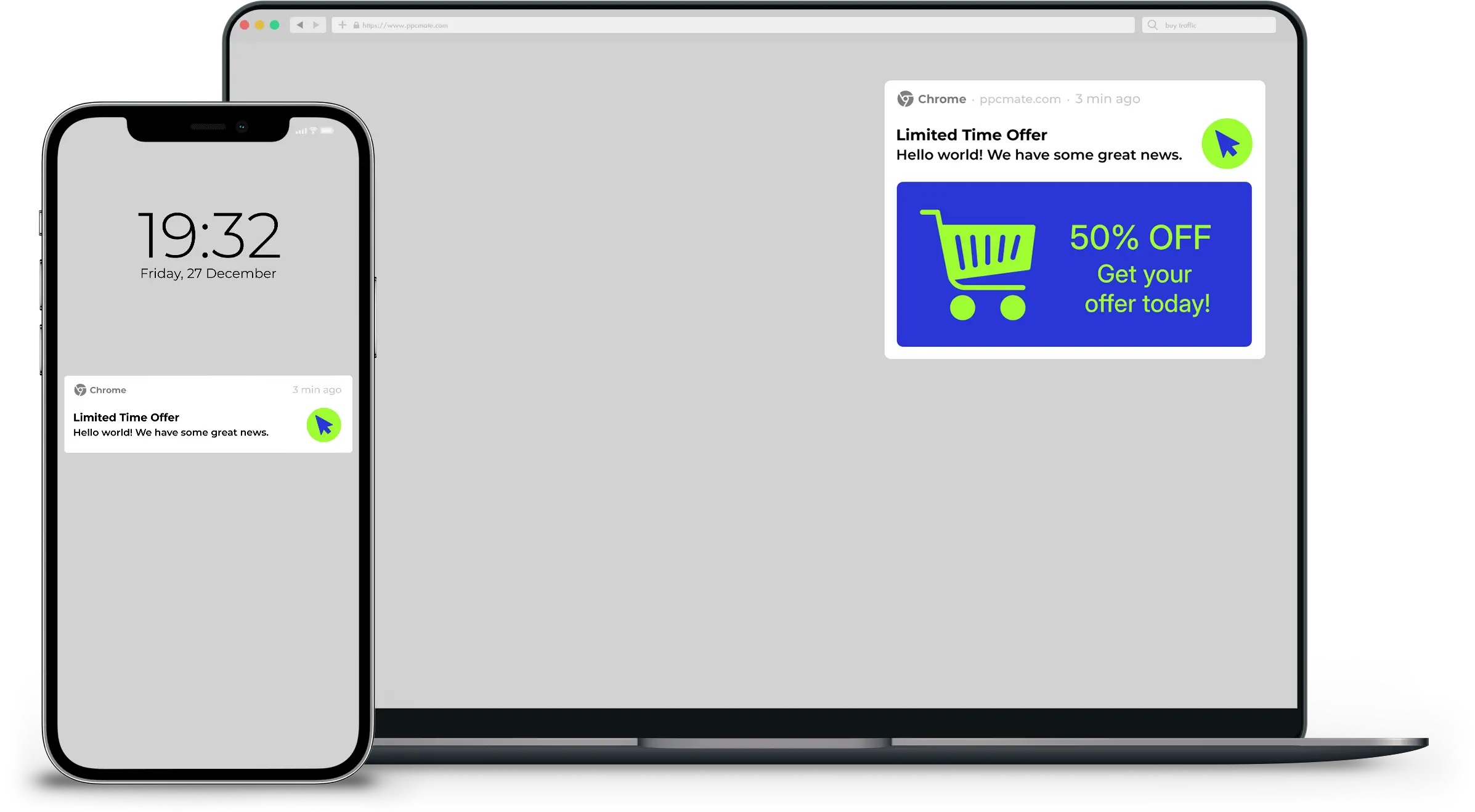While factors like great writing and expert knowledge help, a lot of what will determine the value and virality of your content is the topics themselves. It is not uncommon for content marketers to be overwhelmed with creating so many blog posts that they rush through the topic selection process. Instead, choosing the right topics for your content should stem from proper research, and a strong understanding of why your post is important and what it can offer to your audience.
So how can you create posts that are both viral and evergreen, which will extend the lifetime of the content and get you more results?
In a recent SEMrush webinar, I discussed 6 effective strategies to provide value with your content, while Kathryn Aragon, Ross Simmonds and Justin Champion gave their insights on how you create content that helps people and makes them want to share it.
What Is Viral Content?
Whether you have realized it or not, we have all seen viral content at some point. It is content that is shared widely from one user to another, circulating rapidly and organically online. The content can be social media posts, videos, blog posts, and more.
Viral content can be anything, but it most often meets several of the following criteria:
- Creative
- Entertaining
- Valuable
- Thought-provoking
While most viral content that you see may fall into the categories of hilarious YouTube videos, cute baby panda pictures, or controversial articles, blog content can and does go viral almost as frequently. Blog posts are most likely to go viral when they are helpful and valuable to your audience. When it comes to writing blog posts for your business, using stories to entertain and connect with your community is a good start, and it can also help create thought-provoking content that leaves your readers with questions and wanting more.
Now let’s take a look at six strategies that we have used at Venngage Infographic Maker to help come up with content ideas that are valuable enough to go viral.
1. Solve a Burning Problem
One of the best ways to create content that adds value is to provide solutions to one of your audience’s most common or frustrating problems. Understanding your audience’s pain points will come into play here, as this will allow you to identify what they are struggling with, and offer solutions that are accessible to them. This will require you to place yourself in your readers’ shoes, which is something all content marketers should be doing from the get-go.
Ideally, when you are solving a problem, your content should be both detailed and actionable. Readers should leave your content understanding how to actually take the steps you have described and execute them. Your piece should also offer new answers to existing questions instead of rehashing the same ones.
Need some help coming up with specific ideas to solve problems or to offer solutions? We cover this in-depth towards the end of this post, but here are a few places you can start:
- Check out what both peers and customers are discussing in your industry by visiting forums and discussion groups online.
- Look through your customer support logs.
- Reach out through social media and ask customers directly what topics they want to see covered or need help with.
2. Find Hacks to Common Problems
Sometimes our readers already have solutions, but they aren’t always ideal. This opens up room for you to create content that shares quick hacks to common problems your audience has. Maybe instead of telling them how to install code on each page of site copy you have, you can show them a plugin that does it all at once, for example.
Simplified solutions are always helpful – who doesn’t want to solve the problem faster and simpler? This is why DIY videos on YouTube with the most views are the ones that show the easiest solutions, even to routine tasks. If you don’t believe us, Google “T-shirt folding” and be prepared to see how many views and engagements some of those videos have received.
3. Bust a Myth
Myths are prevalent in all industries, and as an expert, you have an opportunity to bust a myth to educate and entertain your audience. This content can be exciting, making it exceptionally engaging, giving it an edge when you want it to go viral.
In addition to being interesting to read and educational for your audience, this technique is a great way to increase your engagement rates. Myth busting can, after all, spark a lot of debate and provoke a lot of questions to be asked, giving you plenty of opportunities to generate and engage in discussion with your target audience and your peers.
Make sure your myth busting article can hold up to criticism. In Venngage’s case, we created an infographic about millennial myths which received a lot of backlash from frustrated baby boomers who disagreed with the claims being made. The outcome was, of course, a lot of commentary and discussion which resulted in more social media attention for the piece in question. Use specific examples and stories along with statistics, logic, and science to create an iron-clad post people will find credible and interesting. This will earn you new backlinks and more shares, all while helping you to build thought leadership points.
4. Mashup Multiple Topics
Evergreen content has the distinct advantage of being relevant for a much longer period of time, but trending topics have massive search and engagement benefits. You can get the best of both worlds by creating a post that combines evergreen themes with some of the hottest trending topics that everyone is talking about.
One example of how to execute this would be providing tips on how to accomplish a task while using characters of a popular TV series or movie either as examples or a lead into the story. You could also use trending news stories to create viral content, like using a business’s PR crisis to write about customer service or brand reputation. Anything that is relevant is likely to be shared in greater numbers immediately, so this is a great strategy to attract new leads and users who have yet to discover your brand.
5. Find Niches and Subcultures
People don’t just like to be involved in subcultures; they can be incredibly passionate about them. It is part of the reason why memes are so popular, and why Reddit has an endless number of subreddits dedicated to specialized topics of discussion. It is also why Universal has Harry Potter World, and Disney is expanding their Star Wars theme park.
People love to engage with the niches they belong to, so if you are able to create content that appeals to users who engage with these subcultures, they will take the promotion out of your hands, readily and enthusiastically sharing it themselves. Niche-specific content will be shared and enjoyed significantly more by certain groups; as a result, it may get more shares than generalized content even if it won’t appeal to everyone.
6. Envision the Before and After State
Good copywriting should always be able to simply articulate the transition from the “before” state (when your audience has not yet discovered your brand or product) to the “after” state (which is when they have been using your product and seeing results). Before this webinar, for example, maybe you struggled to create content that was getting a lot of shares; after this, you could see your engagement and shares increase dramatically.
To have a clear understanding of where your audience is in the “before” state, think about what an average day in their life is like and how they feel about it. What pain points are sending them to you now? As an accounting software business, for example, maybe you could not only make their invoicing system more seamless, but you could also free them of a task that keeps them away from other work or from their families.
Once you fully understand where potential customers are “before” and where you would like them to be “after”, you can then track the journey between the two states a little more effortlessly. This method of creating content falls under the framework of customer value optimization and is extremely effective when working towards creating content that appeals to the needs of your audience. Use these concepts to generate topics and use language that will appeal most to your readers.
5 Techniques to Help You Discover New Topics
You now have six different strategies and types of content that you can use to generate more engagement and shares, helping your content to go viral. But we have some other techniques to help you discover specific topics to write about.
Here is what the webinar experts had to say…
Ross Simonds, founder of Crate and Hustle&Grind
Reverse-Engineer Your Top Content
Ross shared that one of the most effective ways to find great ideas for new content is to work backward, looking at the top content you have already created is a good place to start. This also applies to content from other brands that you notice audiences are responsive to.
Look at what content is getting the most shares, upvotes, or comments. What specific topics and types of content are getting the most engagement? How can you offer something new in those discussions?
Go to where your audience is. Look in Facebook Groups, LinkedIn Groups, and even Reddit to see what people are talking about, what content they are sharing, and what questions they have. You will get a much clearer idea of what exactly your audience wants to see.
Kathryn Aragon, founder of Vivacitie
Track Trending Topics
Kathryn shared that tracking trending topics is a solid strategy to help jumpstart new ideas for content. See what people are saying in the threads of trending articles, and instead of responding there, you can even create a full-blown piece of content in the form of a response.
Trending topics may also present the opportunity to share content that you have already created in the past, or to repurpose it a bit before resharing.
Justin Champion, principal inbound professor at HubSpot
Utilize Comment Marketing
Justin heavily utilizes “comment marketing” to help identify topics of discussion. He will follow threads on social media and then listen very carefully. In addition to generating new topics to write about based on questions and discussions that are happening there, it also gives an opportunity to build thought leadership and form connections with members of the target audience. You can provide a link to your site on occasion when it fully answers someone’s question in-depth.
That being said, Justin reminded us not to do this too frequently; as he mentioned in the webinar, you don’t want to be that guy at the party everyone avoids because he is always selling something.
Run Some Experiments
All good marketing requires a little trial and error, and content marketing is no exception. You shouldn’t be afraid of experiments; instead, embrace them. Find a way to incorporate content experiments into your overall growth strategy. Test out different types of content (including video, audio, graphics, and more), and different niche topics within your industry. This is the only way to truly see what works and what doesn’t for your exact audience.
Repurpose Content
Repurposing content is an excellent way to generate larger amounts of content that your audience loves, and it is a strategy Justin uses himself to maintain the scale of work he creates.
Because it can be so difficult to create great content regularly, repurposing can help you get more out of your top performing work. This may take different forms, but it commonly means that you can turn an infographic into a blog post, or a blog post into a YouTube video. You can also encourage users to ask questions in your blog’s comments section and then answer them during a Facebook Live.
If you know your audience loves and responds well to a certain topic, get all that you can out of it before dismissing it or you could have a big wasted opportunity.
So I’m ready to create viral content… Where do I get started?
Like all great marketing campaigns, successfully creating viral content requires some in-depth planning and research. Get to know your audience, and once you do you can choose a topic that best solves their problems and provides them with new ideas.
Know that when you actually create the content, your job isn’t over. It is up to you to distribute your content in methods that will allow it to reach your target audience. In many cases, great content never gets shares or goes viral just because it wasn’t distributed properly. As mentioned, 20% of the hard work comes into the writing and content creation; more than 80% of the reason a content piece will go viral is based on the distribution methods.
Many people enjoy one-to-one communications, so brands can reach their customers using Facebook Groups, LinkedIn Groups, or Facebook Messenger. They can also use social media and email marketing campaigns to increase the number of people who see the content when it is first out. Diversify the platforms you are sharing the content on, as some people love Facebook but others may prefer Snapchat or Instagram. Get creative and help your audience find your content so they can take it from there and do the rest of the work for you.
Final Words
While there are a lot of factors that can affect whether or piece of content goes viral, understanding your audience will help you stack the deck in your favor. Being able to identify your audience’s pain points and offer them solutions that are both simple and useful, while engaging in their specific interests, will provide the kind of value that they need. Your audience always should come first, after all, and content marketing is no exception.
___
by Nadya Khoja
Source: semrush.com









